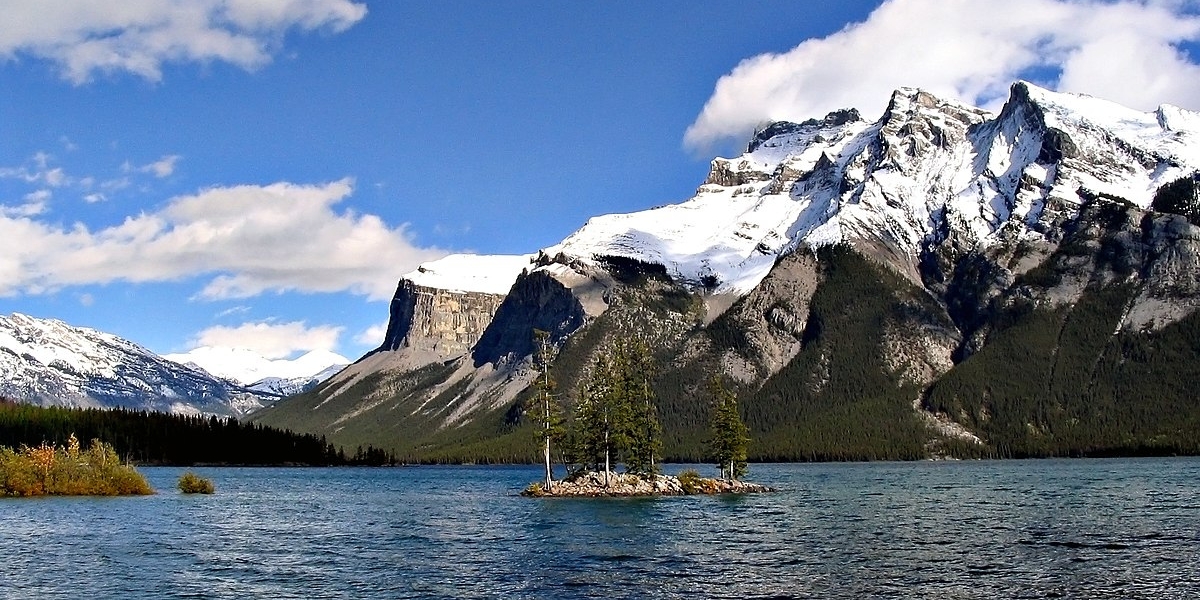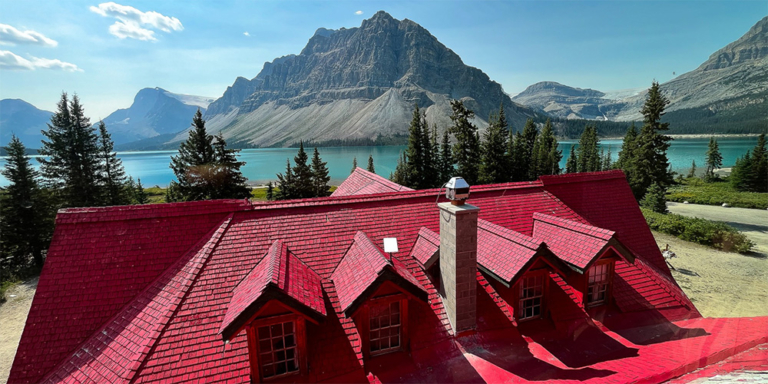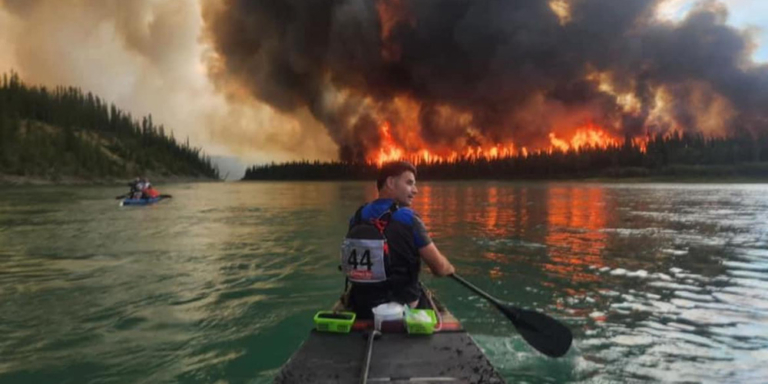Known to the Stoney Nakoda First Nations as Minn-waki or “Lake of the Spirits,” this glacial lake is more than just a pretty face. Located in the eastern area of Banff National Park, Lake Minnewanka is home to 14,000 years of history.
For hundreds of centuries, First Nations hunted and camped along the shores of the lake, which they respected and feared for its resident spirits. Similarly, the Early Europeans called it Devil’s Lake.
Is the beautiful lake really as scary as it sounds?
One legend speaks of an Indigenous man who was the first to lay eyes on Lake Minnewanka.
Perched on one of the highest mountains overlooking the lake, the man saw a fish as long as the lake. The legend identifies one of the water spirits thought to inhabit the lake.
Another more popular legend references a mythical merman that once lived in the lake. The creature was allegedly captured and is now on display at the Banff Indian Trading Post.
While we won’t take a position on the legitimacy of these legends, there’s one thing we do know. Below Lake Minnewanka’s crystal blue surface lies a ghost town called Minnewanka Landing.
Minnewanka Landing was once a bustling lakeside resort town that drew visitors from Calgary for years. The town grew in popularity after constructing the Beach House, a hotel built out of logs.
The townsite consisted of four avenues and three streets where visitors could enjoy hotels, restaurants, wharves, and sailing tours aboard the town’s two cruise boats: “Lady of the Lake” and “Daughter of the Peaks.”
So how did such a thriving town end up underwater? A horrific natural disaster?
No. The answer is damming.
Dammed From The Start
In 1895, Lake Minnewanka was dammed to improve the boggy shoreline for boating. But the beginning of the town’s end began in 1912 when the lake was dammed for a second time.
This time, the lake was dammed to store water for a downstream hydroelectric plant on the Cascade River. The new dam, owned by Calgary Power Co., flooded a large portion of Minnewanka Landing.
In the following years, the town thrived, with 42 lots being built for additional cabins. But the booming town’s final nail in the coffin occurred in 1941.
The construction of a second dam in 1912 was followed by a 20-year struggle between advocates of power development and those wanting to protect park resources.
“It was during the Second World War, and everyone was hungry for power,” Bill Perry, a Parks Canada archaeologist, told Smithsonian Magazine.
But in 1940, the Canadian government approved the construction of a third dam under the War Measures Act, which temporarily suspended the 1930 National Parks Act.
The 1930 National Parks Act did not allow industrial development from national parks. However, the government argued that the power from the dam was needed to supply the war effort.
“Calgary and the surrounding area were growing substantially during that point in time and required more power, so Lake Minnewanka was seen as an easy end,” said Perry.
Minnewanka Landing Today
Minnewanka Landing may have been flooded, but the townsite is still alive. Lake Minnewanka’s cold waters have allowed many of the town’s structures to survive for several decades.
Some surviving structures include house and hotel foundations, piers, an oven, a cellar, a chimney, sidewalks, and bridge pilings.
In recent years, spear points, arrowheads, stone tools, and ancient weapons from a nearby First Nations campsite have also been discovered by archaeologists.
As a result, the lake has become a popular diving spot. Perry estimates that around 8,000 divers descend into the lake yearly to explore the rich history buried underwater.
But Lake Minnewanka offers more than just a ghost town. Visitors can enjoy hiking trails around the mountains and lake, including a 30-kilometre trek.
Additionally, there is a boat cruise where visitors can learn about the history and geology of the area. Lake Minnewanka is also the only lake in Banff National Park that allows motorboats. If interested, they can be rented from Lake Minnewanka Boat Rentals.






